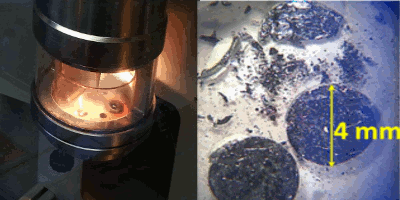(nano)Materials for Energy Group Leader : Stéphane Pailhès
|
|
The development of new sustainable energy sources requires an important effort in fundamental research in order to identify and understand the physical mechanisms underlying promising functional properties. Such understanding is essential not only for optimizing existent materials and devices but also for leading to the discovery of new materials. It also appears at this day the need of integrating in the search of new materials upstream costs criteria, abundance, toxicity and recyclability. In this context, great efforts are made all over the world to identify new materials for energy conversion, hydrogen storage or sustainable development. |
|
||
|
The "energy" group is a multidisciplinary group that includes chemists, physicists and theoreticians, whose aim is to achieve a fundamental understanding of energy-related mechanisms and synthesize new more or less complex materials and nanomaterials for applications both in the field of energy, biophysics, optics, nano-mechatronics. Several aspects have to be covered in the needed energy revolution, from renewable energy production and storage to energy consumption reduction. New proposed materials can thus play a major role in each of these fronts. It can be matter of very complex materials, from the chemical point of view or for their crystalline structure (materials for thermoelectricity for example) or of very simple ones, like carbon. This latter, one of the most abundant elements on the planet and also chemically versatile, offers countless opportunities to meet the energy challenges of the XXI century. Indeed, the extraction of fossil fuels, carbon based, was the basis for a clean energy paradigm in the twentieth century, but it has strongly been challenged by the climate impact of CO2 emissions. Today new carbon-based ways can be proposed for the energy revolution. The group relies on two experimental platforms of the ILM PLECE and PLIRA, as well as an efficient cluster available in the Institute and on access to external calculation facilities. |


















